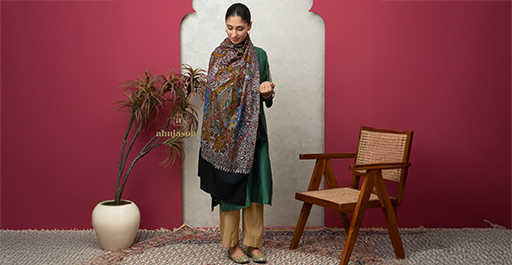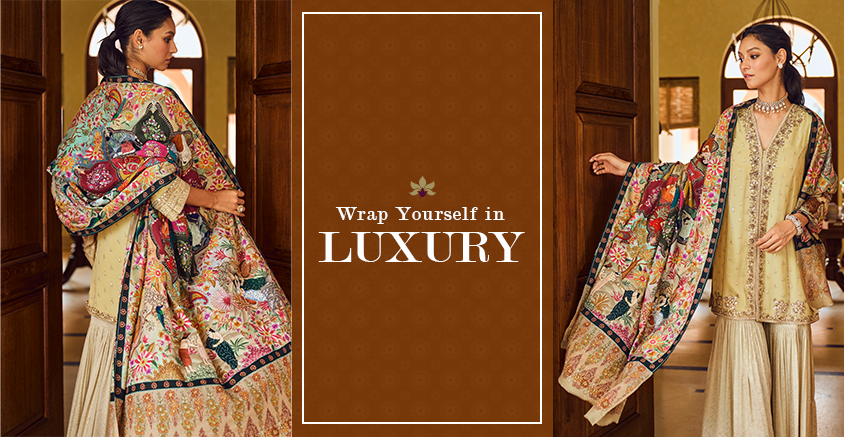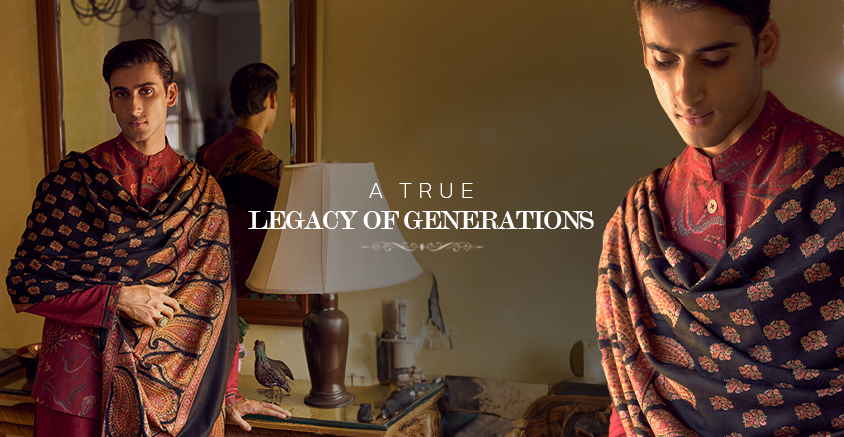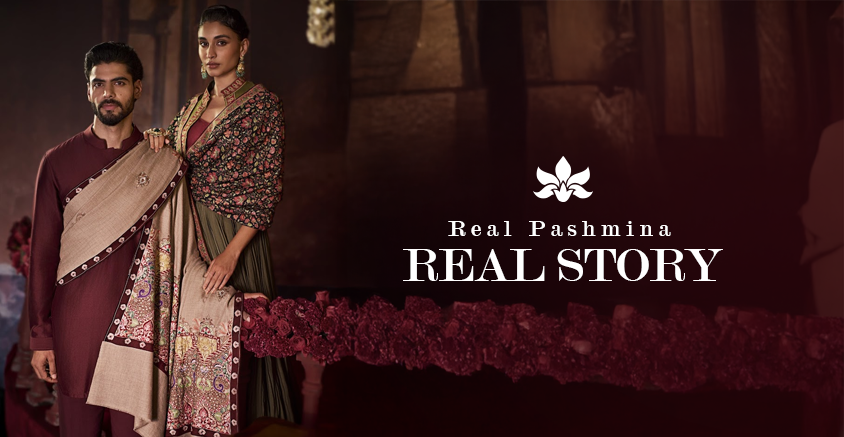For generations, we’ve been at the forefront of luxury shawls, guiding connoisseurs to the world’s finest Pashmina. Yet the question always lingers: Why are Pashmina shawls so expensive? The answer is simple — you’re not just paying for fabric; you’re investing in heritage, craftsmanship, and timeless legacy.
From the Himalayan peaks where the rare Changthangi goats graze, to the meticulous hands of artisans who hand-spin and weave each thread, every phase of the pashmina journey reflects an unbreakable bond between heritage and artistry. In this blog, we uncover the true value of fancy pashmina shawls—and why they’ve earned a rightful place among the most coveted heirlooms in the world.
What Makes a Pashmina Shawl Special
Pure pashmina begins high in the Himalayas, where the Changthangi goats produce an incredibly fine undercoat to survive sub-zero winters. It’s this fibre—collected by combing, not shearing—that becomes the base of the shawl.
The yield? Just 100–150 grams per goat, per year. That’s barely enough for a single shawl.
This natural scarcity is the first—and perhaps most profound—reason why pashmina is considered one of the most expensive shawls in the world.

How a Pashmina Shawl is Made
Unlike mass-produced fabrics, pure pashmina follows a rhythm all its own. The wool is hand-spun using traditional tools—delicate, slow, and deeply skilled work. Then comes weaving, often done on wooden looms by artisans who have spent decades perfecting their craft.
Depending on its detailing, a single shawl can take weeks to complete. And that’s before any embroidery, finishing, or quality checks even begin. What you’re paying for isn’t speed. It’s the patience, precision, and pride behind every thread.
How to Spot the Real Deal
Unfortunately, the popularity of pashmina has led to a flood of imitation blends in the market. Many use a mix of wool, viscose, or even acrylic—priced lower, but incomparable in feel and longevity.
A true pure pashmina shawl is lightweight yet incredibly warm, soft yet strong. It doesn’t pill easily, and it drapes with a natural grace that cheaper fabrics simply can’t mimic. Quality matters—and authentic pashmina commands its worth.

Why Each Pashmina Shawl is Unique
Some shawls go beyond utility and step into the world of art. These are the fancy pashmina shawls—adorned with intricate embroidery, traditional patterns, or kaani and gulabdaar work, all done by hand.
Each motif carries cultural significance, often taking months to complete.
The result? A one-of-a-kind piece that reflects heritage, emotion, and elegance—all woven into its fabric.
Sustainable Luxury in a Pashmina Shawl
Beyond raw materials and design, the integrity of the making matters. From fair wages to ethical sourcing, creating authentic pashmina involves conscious decisions at every step.
The wool is hand-combed without harming the goats, the artisans are skilled locals whose livelihoods depend on traditional weaving, and the dyeing process often favours natural hues. This slow, ethical approach does cost more, but it’s what makes the outcome deeply meaningful.

Global Demand, Local Legacy
The world’s growing love for pure pashmina has increased demand, but production remains limited by geography and tradition. You can’t scale heritage.
That’s why these shawls maintain their exclusivity—even as they find homes in wardrobes from New Delhi to New York.
Owning one is more than a style statement—it’s a quiet appreciation of what can’t be replicated by machines or rushed through supply chains.
Final Thought: A Pashmina Shawl Isn’t Just Expensive — It’s Worth It
When you hold a fancy pashmina shawl in your hands, you’re holding generations of skill, a piece of Himalayan geography, and the unmatched finesse of handwoven art. Yes, it’s expensive. But that price reflects everything you don’t see on the tag—time, tradition, and trust.
Whether you’re investing in it as a gift, an heirloom, or a personal indulgence, know this: you’re not just buying a shawl. You’re carrying forward a legacy.





